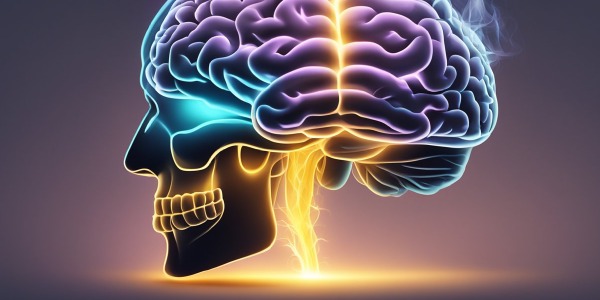Mastering Mindfulness Online: The Best Digital Tools for Mental Clarity and Sharp Focus
In the digital era, we’re constantly connected to a world that rarely sleeps, often at the expense of our mental well-being.
Mastering mindfulness online has become not just a convenient option but a necessary tool for many seeking mental clarity and focus.
Mindfulness is the art of being present and fully engaged with whatever we’re doing at the moment — free from distraction or judgment.
With the rise of online resources, it is now more accessible than ever to cultivate mindfulness practices that can support mental health and improve concentration.

Moreover, online platforms offer diverse mindfulness strategies tailored to different needs, from stress relief to specific therapeutic interventions.
Whether it’s guided meditation sessions, interactive exercises, or educational content that delves into the science behind mindfulness, digital resources allow people from all walks of life to incorporate mindfulness into their daily routines.
These tools can help individuals understand and cope with stress, offer support for specific groups, and highlight the practical applications of mindfulness in daily life.
Key Takeaways
- Online mindfulness resources provide accessible ways to achieve mental clarity and focus.
- Tailored digital programs support various aspects of mental health and well-being.
- Adoption of mindfulness practices is facilitated by scientific research and emerging trends.
Understanding Mindfulness

Mindfulness is the practice of maintaining a moment-by-moment awareness of our thoughts, feelings, bodily sensations, and surrounding environment. It involves acknowledging and accepting one’s feelings and thoughts without judgment.
The Essence of Mindfulness
Mindfulness centers on enhancing your self-awareness and cultivating a state of presence. The key aspects are:
- Attention: Focusing your mind on the present.
- Awareness: Recognizing your current emotions and thoughts.
- Acceptance: Observing without criticism or judgment.
Mindfulness and Mental Health
Incorporating mindfulness into your routine can profoundly improve your mental health.
- Reduction in Stress: Mindfulness meditation has been shown to reduce symptoms of anxiety and depression.
- Enhanced Focus: Regular practice can increase your ability to concentrate and maintain attention.
History and Evolution of Mindfulness
Mindfulness has a rich history that spans several cultures and eras.
- Origins: Rooted in ancient Buddhist meditation techniques.
- Western Adoption: Mindfulness was adapted for medical intervention during the 20th century.
Scientific Perspective
Scientific studies of mindfulness reveal its impact on the brain.
- Neuroplasticity: Evidence shows mindfulness practice can change the structure and function of the brain.
- Cognitive Benefits: Research indicates improvements in memory, focus, and cognitive flexibility.
Mindfulness practices, when engaged regularly, can be a gateway to improved mental clarity and focus.
Digital Advancement in Mindfulness

The journey to mental clarity is now more accessible than ever, thanks to the ingenuity of digital tools designed for enhancing mindfulness. Dive into how technology reshapes the art of remaining present.
Role of Technology in Mindfulness Training
Technology has revolutionized your ability to engage in mindfulness training.
Online mindfulness interventions utilize various digital platforms, allowing you to practice and learn techniques from anywhere with internet access.
Smartphone apps have become particularly popular, offering guided meditations, timed sessions, and progress tracking.
For instance, you might use an app that sends you daily reminders to take mindful breaks or tracks your mood changes over time.
Social media platforms are not just for connection and entertainment; they also play a significant role in mindfulness.
Many social media accounts are dedicated to promoting mindfulness practices, sharing daily affirmations, and offering live-streamed guided sessions.
Platforms like YouTube or dedicated online learning websites offer extensive libraries of mindfulness sessions, some of which are tailored for specific needs or times of the day.
Evaluating Online Mindfulness Resources
When you’re choosing an online mindfulness resource, consider its credibility and the qualifications of the content providers. Here is a simple table to help you evaluate the options:
| Criteria | What to Look For |
|---|---|
| Credibility | Endorsements from health professionals, evidence-based methods, transparent provider profiles |
| User Experience | Intuitive design, ease of navigation, availability of customer support |
| Personalization | Ability to set personal goals, tailor sessions to your needs, feedback mechanisms |
| Community Support | Forums, group sessions, expert Q&A availability |
| Cost | Free, subscription-based, or one-time purchase options; additional in-app purchases |
Ensure that your chosen app or platform supports the kind of learning and practice you prefer.
For interactive learning, platforms that offer live courses or connect you with mindfulness coaches might be favorable.
If you enjoy self-paced sessions, an app with a wide library of pre-recorded sessions could be ideal.
Remember to look for resources that fit not only your mindfulness goals but also your technology preferences, be it through a dedicated app or a responsive website for smartphone usage.
Mental Clarity and Coping with Stress

Achieving mental clarity and managing stress are crucial, especially during challenging times. This section provides you with actionable digital resources and techniques to help you focus and reduce stress.
Mindfulness Techniques for Reducing Stress
Mindfulness can significantly impact your stress levels, offering a respite from the chaos. Various online platforms offer guided mindfulness exercises to help you:
- Recognize stress-inducing thoughts
- Train your attention to the present
- Cultivate an attitude of non-judgment
For example, Headspace and Calm are apps providing short daily exercises aimed at stress reduction.
Breathing Exercises and Focus
Breathing techniques are a core part of gaining focus and mental clarity. They can:
- Slow down your heart rate
- Reduce blood pressure
- Promote a sense of calm
A simple exercise to include in your daily routine:
- Inhale for a count of four.
- Hold for a count of four.
- Exhale for a count of four.
- Pause for a count of four.
Repeat this cycle for five minutes and notice the reduction in stress.
Applying Mindfulness in Stressful Situations
The ability to apply mindfulness in the heat of the moment is a skill that can be nurtured.
Digital resources and apps can provide you with the necessary tools to respond rather than react to stress. Here’s how:
- Use a notification from an app like Insight Timer to take a mindfulness pause.
- Keep quick access to a meditation playlist for an immediate grounding technique.
- Engage in short, on-the-spot exercises to refocus your concentration.
Mindfulness for Specific Groups

Mindfulness practice caters to various demographics, each with unique challenges and environments. Recognizing the specific needs of different groups helps in effectively integrating mindfulness into their daily routines for improved focus, mental clarity, and overall well-being.
Mindfulness in Education
- Students: As a student, you face academic pressures, social stress, and the need to balance coursework with personal life. Mindfulness can enhance your concentration and emotional regulation. Using apps like Headspace for Students offers guided meditations tailored to your need for relaxation and focus.
- University Students: Higher education comes with its unique set of stressors, including the transition to adulthood and career concerns. Mindfulness techniques can be absorbed through digital platforms like Calm, providing specialized programs for anxiety reduction and sleep improvement that can significantly enhance your quality of life.
Mindfulness at the Workplace
- Employees: The demands of your job often lead to stress, burnout, and reduced job satisfaction. Incorporate short mindfulness exercises into your day using platforms like Insight Timer, which offers work-related mediation series to improve your mental well-being and productivity.
- Workplace Environment: A harmonious workplace environment supports work-life balance. The 10% Happier app delivers mindfulness content that can be easily integrated into daily work routines, fostering a culture of focus and reduced stress.
Mindfulness for Physical Health
- Mental Well-Being: Mindfulness practices have a direct impact on your mental health, which in turn affects your physical health. Digital resources such as MyLife Meditation are designed to track mood patterns and suggest personalized meditation activities.
- Quality of Life: Implementing mindfulness exercises, even for just a few minutes daily, can improve your overall quality of life by reducing symptoms of physical stress and enhancing your physiological resilience. Platforms like Smiling Mind cater to a broad audience with programs ranging from stress management to mindful eating.
Practical Applications of Mindfulness

Incorporating mindfulness into your daily life can significantly enhance mental clarity and focus. Here, you’ll find targeted strategies for refining this practice and reaping its benefits.
Daily Mindfulness Exercises
Mindfulness exercises lay the foundation for a more attentive and serene day. You can boost productivity by starting with a simple five-minute meditation each morning:
- Sit in a quiet space.
- Focus on your breath.
- Gently redirect your attention when thoughts arise.
Regular practice helps you observe your thoughts and emotions without judgment, allowing for enhanced self-awareness throughout your day.
Mindful Living and Relationships
Maintaining meaningful relationships requires attention and presence. Here’s how you can apply mindfulness:
- Actively listen when engaging with others, fully absorbing their words.
- Respond thoughtfully, pausing to consider your words and their impact.
This approach helps to build stronger, more empathetic connections, fostering a deeper understanding of others’ feelings and perspectives.
Integrating Mindfulness into Personal Growth
Mindfulness is a critical component of personal growth. To integrate it:
- Reflect on your daily experiences to find learning opportunities.
- Acknowledge and sit with uncomfortable emotions to better understand and manage them.
By doing so, you not only tackle the emotions at hand but also equip yourself with the tools to handle future challenges, steering your personal development in a positive direction.
Advanced Mindfulness and Therapeutic Interventions

In the realm of mental wellness, harnessing the power of mindfulness interventions can lead to significant improvements in your cognitive function and emotional regulation. Discover how advanced mindfulness practices and their integration into therapeutic settings can enhance your psychological health and help manage stress.
Mindfulness-Based Stress Reduction (MBSR)
Mindfulness-Based Stress Reduction is a standardized program that helps you to focus on the present moment while acknowledging and accepting your feelings, thoughts, and bodily sensations. Developed by Jon Kabat-Zinn in the 1970s, MBSR is an 8-week course that combines mindfulness meditation and yoga to improve your mental well-being.
Components of MBSR:
- Guided mindfulness meditation practices
- Gentle stretching and yoga
- Group discussions
Schedule & Commitment:
- Typically involves a weekly class session
- Daily home practice for about 30-45 minutes
Research indicates that MBSR is an effective intervention for reducing psychological stress and enhancing emotional well-being. A systematic review and meta-analysis of clinical trials suggest that MBSR can lead to measurable improvements in various aspects of psychological health.
Psychological and Therapeutic Benefits of Mindfulness
Integrating mindfulness into therapy provides a multitude of benefits that address both mind and body. Regular mindfulness practices are linked to improvements in cognitive function, which includes better attention, focus, and processing speed.
- Emotional Regulation: Mindfulness helps you gain control over your emotions, reducing feelings of anxiety and depression.
- Stress Management: By focusing on the present, mindfulness techniques can lower levels of cortisol, the stress hormone.
A systematic review of mindfulness interventions within therapy settings reveals that these practices can result in substantial benefits for emotional and psychological well-being. When mindfulness is implemented as a part of an intervention strategy, it acts as a complementary approach that can amplify the therapeutic outcomes.
Scientific Research and Evidence

Scientific evidence plays a crucial role in validating the effectiveness of online mindfulness resources. It’s through meticulous research that you can understand the real impact of digital mindfulness exercises on mental clarity and focus.
Analyzing Data from Randomized Controlled Trials
Randomized controlled trials (RCTs) are often referred to as the gold standard for evaluating the effectiveness of health interventions. In the context of mindfulness, RCTs provide you with objective data on how digital programs can enhance mental well-being. Studies listed on databases like PubMed have revealed a significant positive effect of online mindfulness practices on reducing stress and anxiety.
For example, a 2020 RCT with 150 participants might display the following results:
| Group | Pre-intervention Stress Score | Post-intervention Stress Score |
|---|---|---|
| Mindfulness | 45 | 30 |
| Control | 44 | 43 |
The above table indicates that participants who engaged with online mindfulness experienced a reduction in stress scores compared to the control group who did not.
Case Studies and Meta-Analyses on Mindfulness
Case studies provide in-depth insights into individual experiences, while meta-analyses compile data from multiple studies to give you a comprehensive view of the research landscape. Through systematic reviews and meta-analyses, the efficacy of mindfulness sessions conducted online can be assessed by looking at improvements in participants’ focus and clarity over time. A meta-analysis might highlight that participants across 20 studies reported a 25% improvement in focus after regularly engaging in online mindfulness activities.
- A meta-analysis example:
- Number of Studies Included: 20
- Overall Improvement in Focus: 25%
- Improvement in Clarity: 20%
Challenges and Considerations

When diving into online mindfulness resources, you must navigate a few hurdles to ensure a positive impact on your mental clarity and focus. Understanding accessibility and inclusivity issues, as well as learning how to evaluate the authenticity of content, is central to your experience.
Accessibility and Inclusivity in Online Mindfulness
Online mindfulness platforms should be open to everyone. They often lack subtitles, sign language interpretation, or content that is accessible for individuals with visual or hearing impairments. Here’s a checklist to help you:
- Ensure availability of subtitles or transcripts for videos.
- Look for apps with assistive features (e.g., screen readers).
- Seek platforms offering content in multiple languages.
- Verify if there are financial assistance programs for those in need.
Inclusivity also extends to ensuring culturally relevant practices are recognized. Credentials of instructors, such as a degree in psychology or expertise in counseling, are indicative of quality but not necessarily inclusivity. Inclusivity involves:
- Content that respects different cultural approaches to mindfulness.
- Programs that adapt methods to a variety of social contexts.
Evaluating the Authenticity of Mindfulness Content
In this digital age, discerning credible mindfulness content can be a challenge. Here’s a step-by-step approach:
Check for credentials: Look for programs created or accredited by a licensed psychologist or professionals with formal training in mindfulness.
Research the creators: Explore their professional background and experiences.
Appraisal of claims: Shy away from exaggerated promises. True mindfulness practice offers benefits gradually and requires consistent practice.
User reviews: Read experiences of others and the impact the content had on their focus and mental clarity.
Free trials or sample sessions: Experience the content firsthand to assess its value.
Emerging Trends in Mindfulness

In the fast-paced digital era, mindfulness practices have had to adapt and evolve. You’ll find that the intersection of technology and mental well-being brings about innovative methods to help you maintain mental clarity and focus.
Mindfulness and Social Media Exposure
Social media has become a double-edged sword in terms of mental health, with its power to both disturb focus and enhance mindfulness.
One emerging trend is the creation of online mindfulness interventions designed to foster resilience against the negative impacts of social media.
You may notice the surge of platforms offering bite-sized meditation sessions which align with the brief, scrollable content you’re accustomed to.
Curated Content: Algorithmically tailored feeds are now being developed to expose you to mindfulness-promoting material.
Imagine opening your app to a dashboard that prioritizes relaxing imagery and meditative prompts over the typical noise.
Digital Detox Challenges: Platforms encourage you to take periodic breaks in a supportive, community-driven way.
These challenges are geared towards reducing screen time, thus potentially increasing your mental clarity.
Interactive Sessions: Live-streaming and interactive features allow you to engage in real-time mindfulness exercises with experts.
These sessions offer a sense of connection and immediacy to your practice.
Measurable Progress: You’ll find tools integrated into these social platforms that help track your adaptation to mindfulness practices.
For instance, habit-forming features that nudge you to keep consistent with daily meditations.




